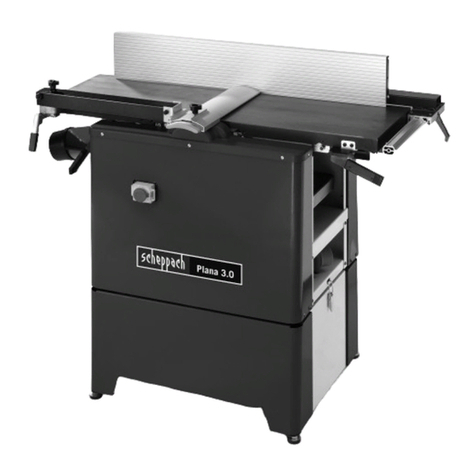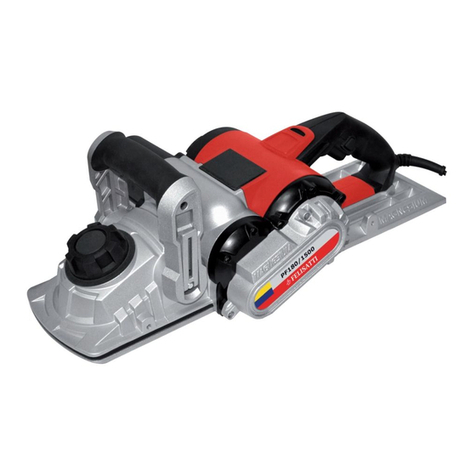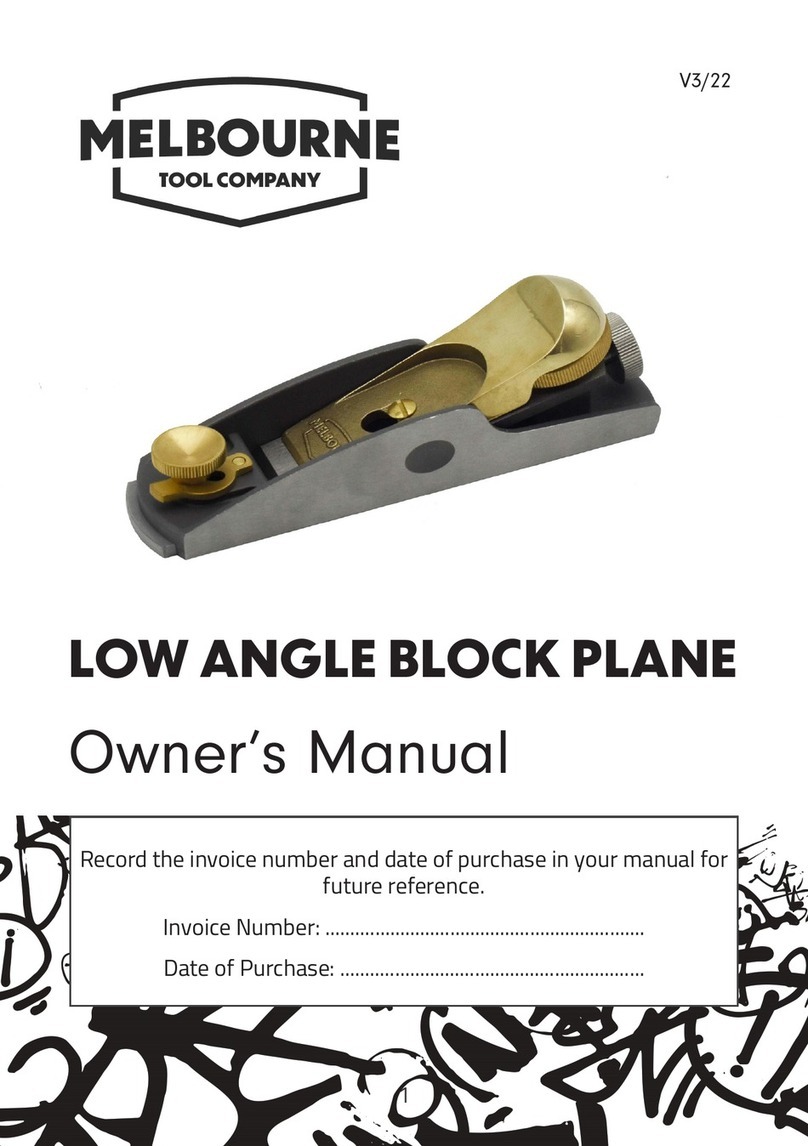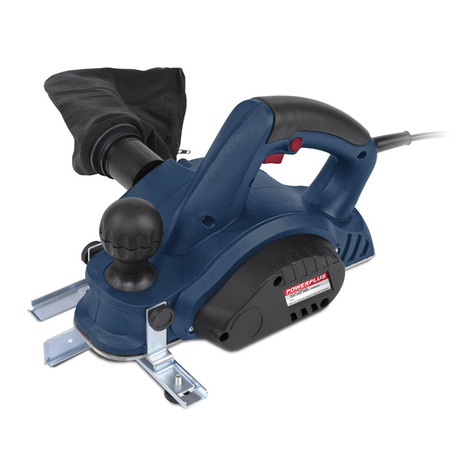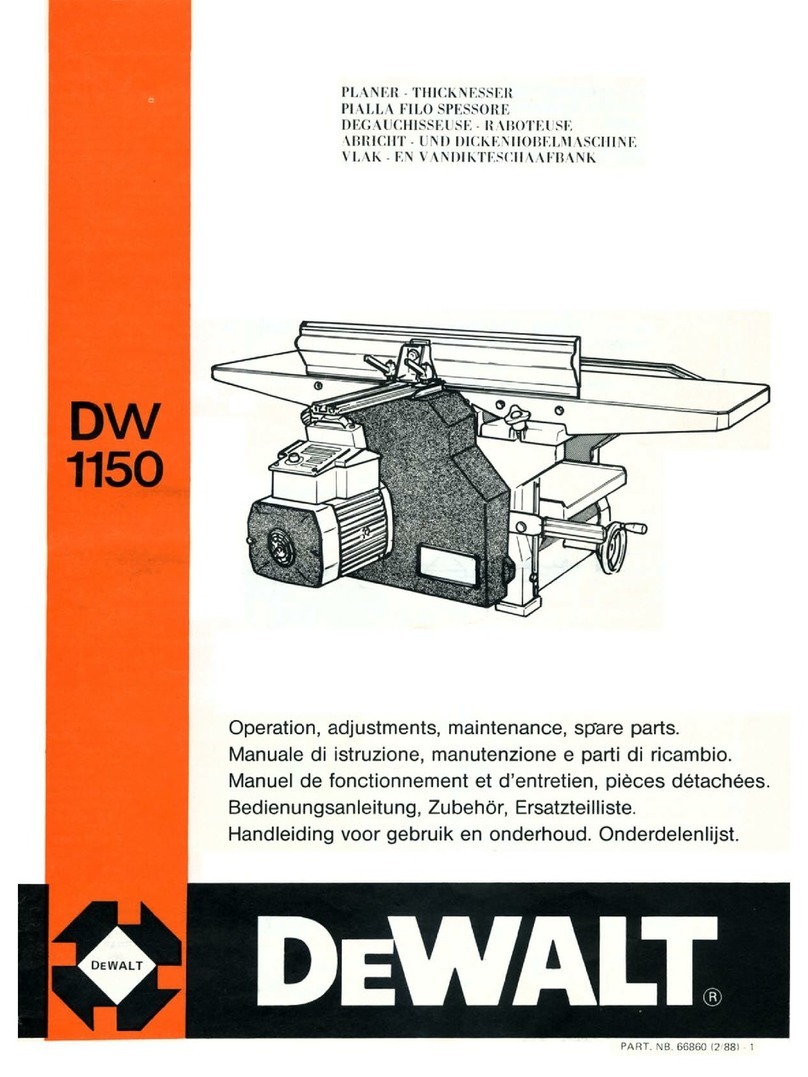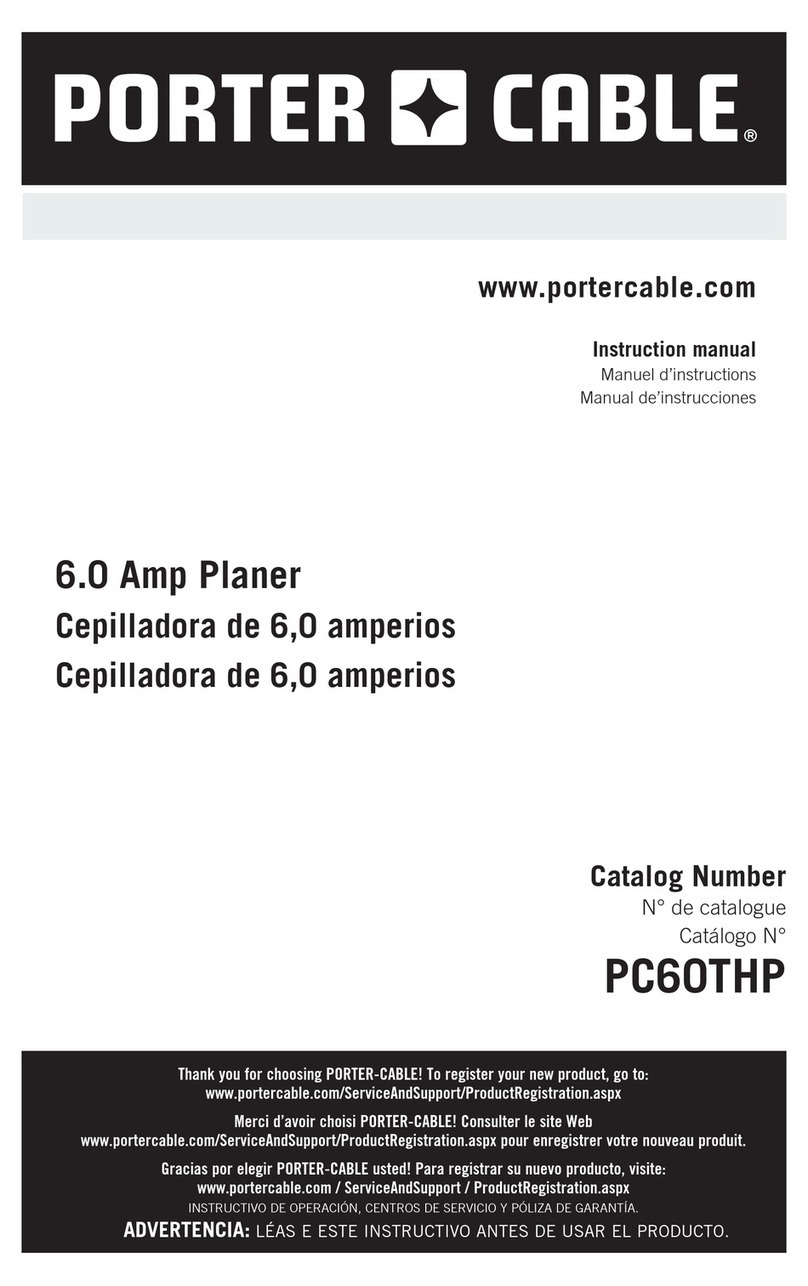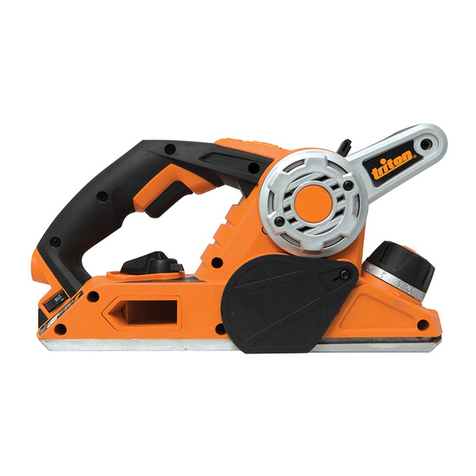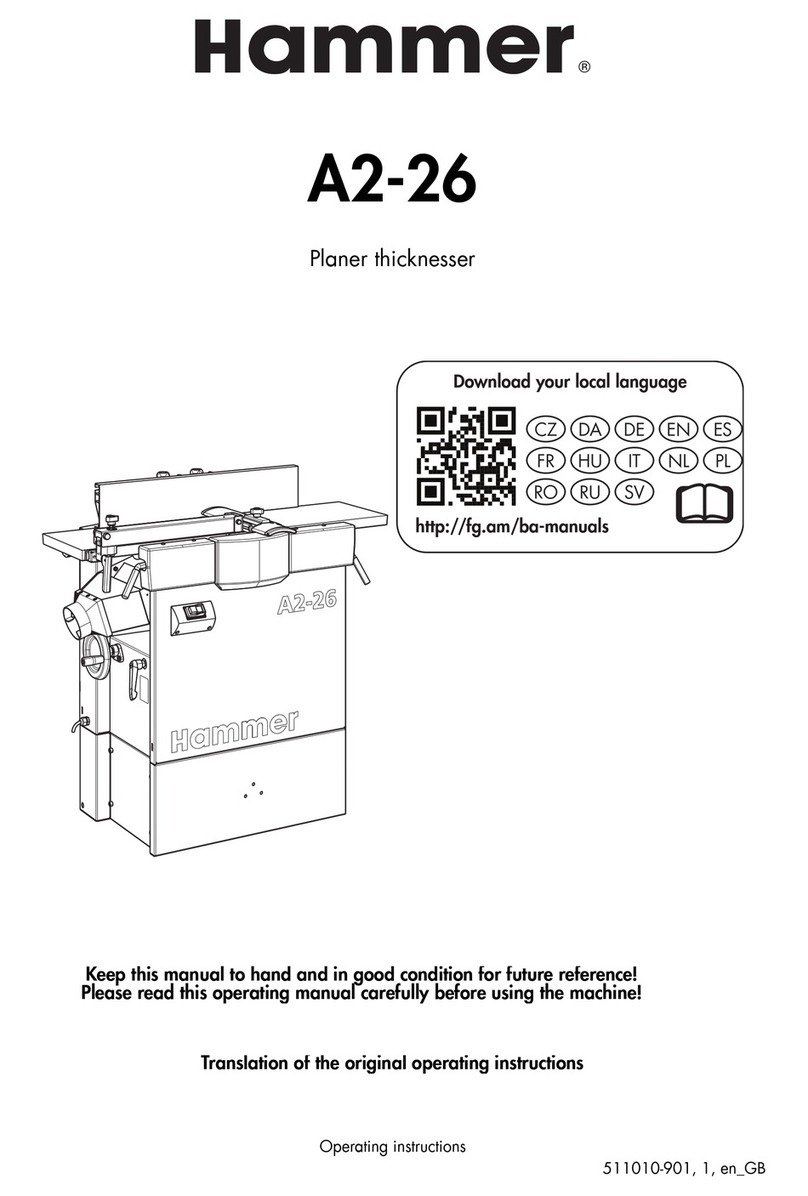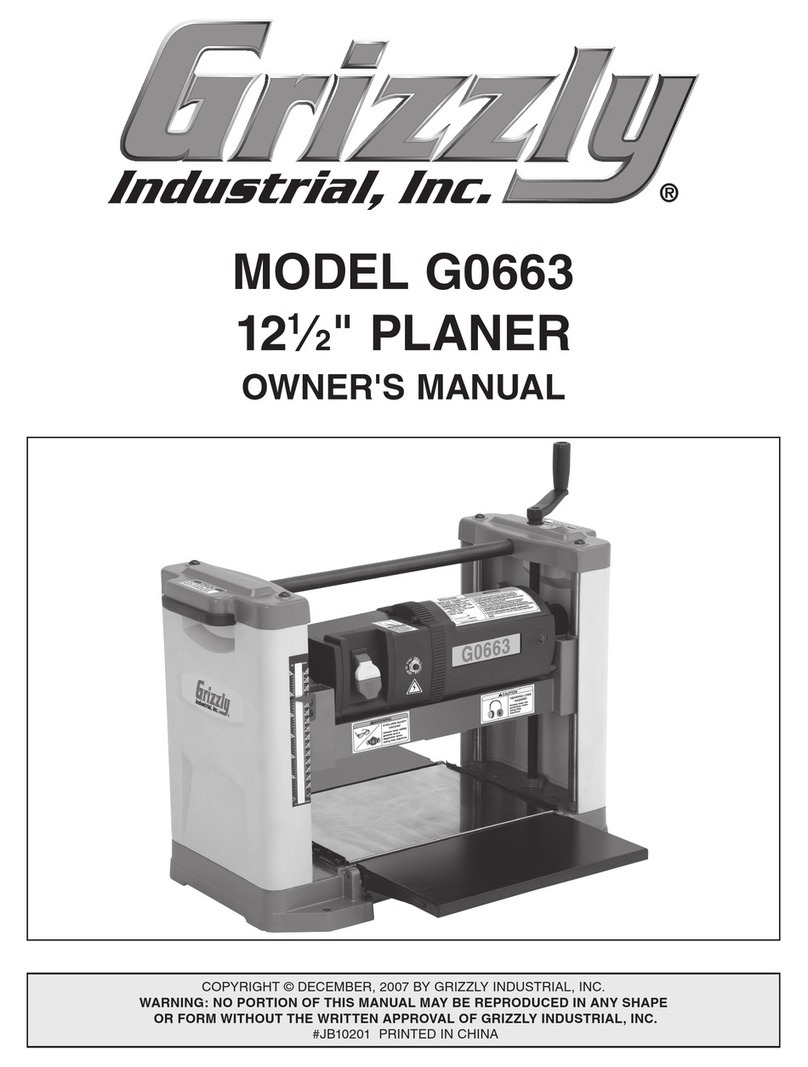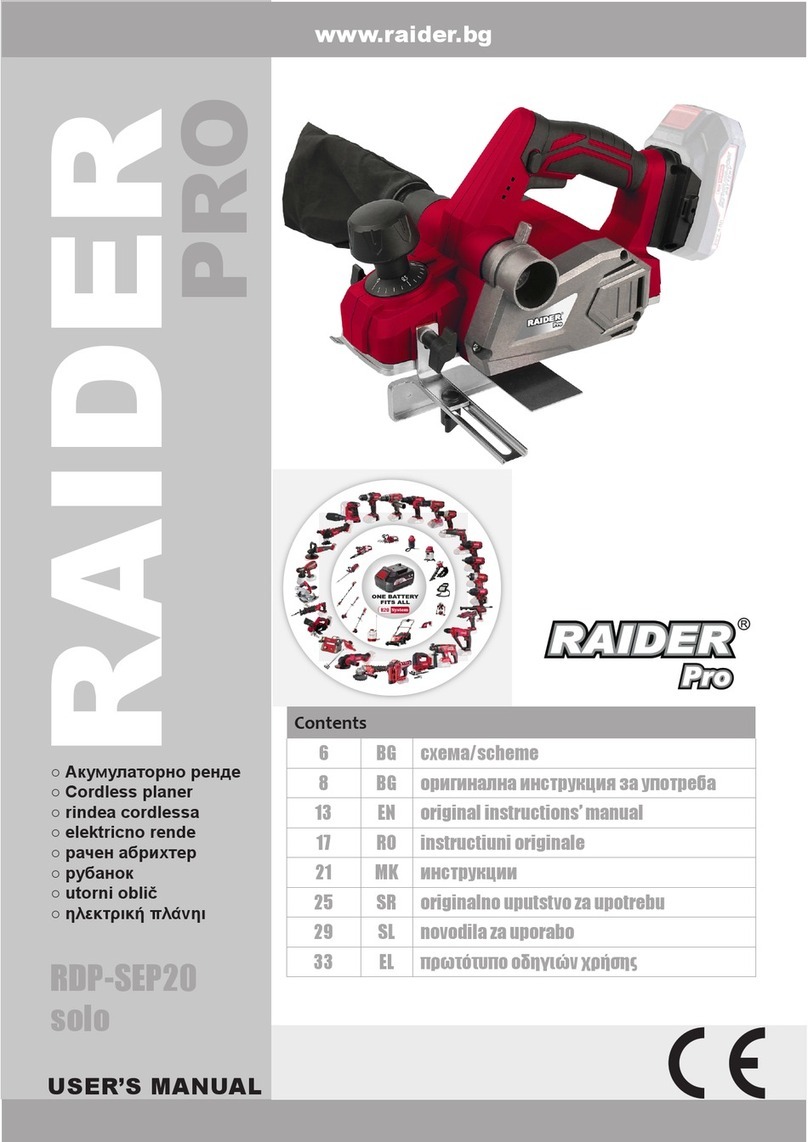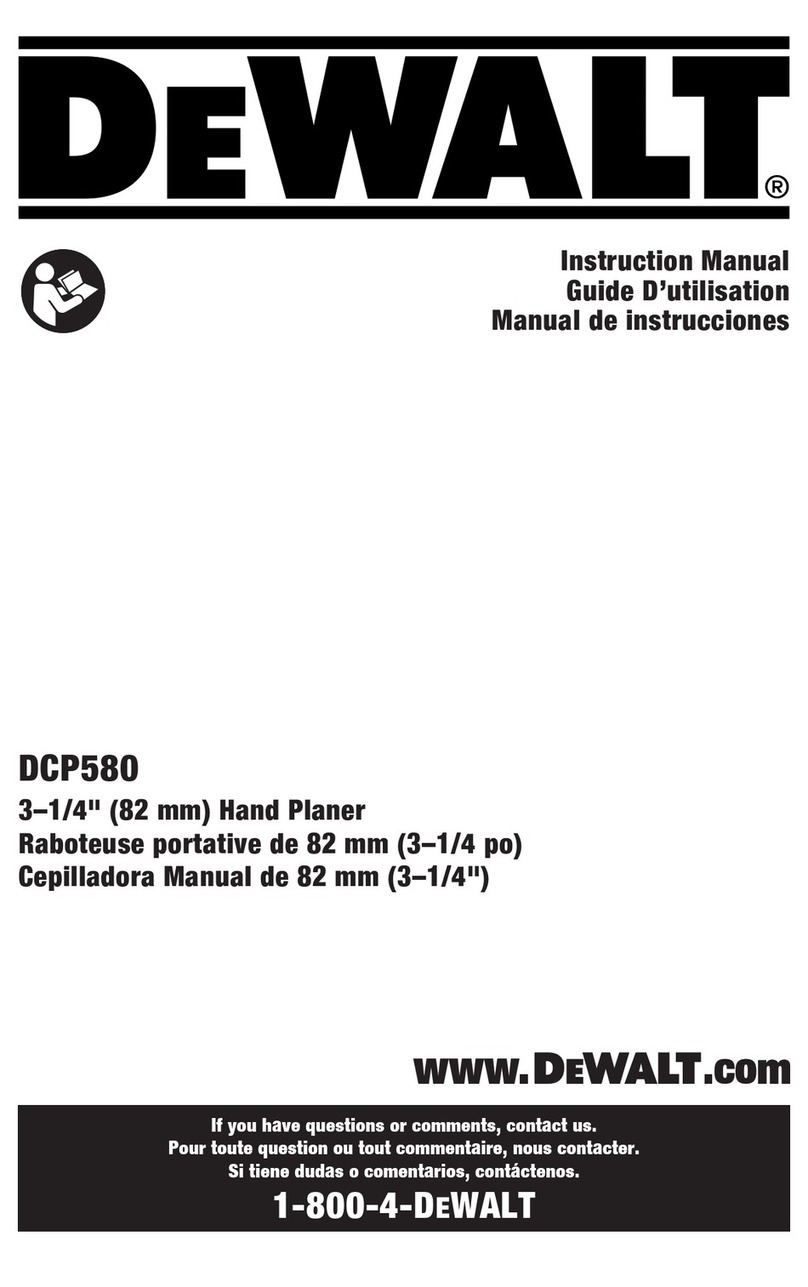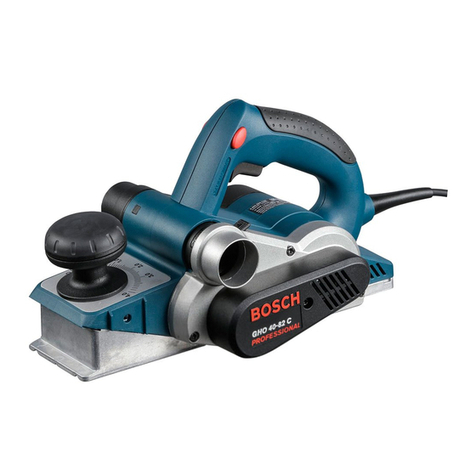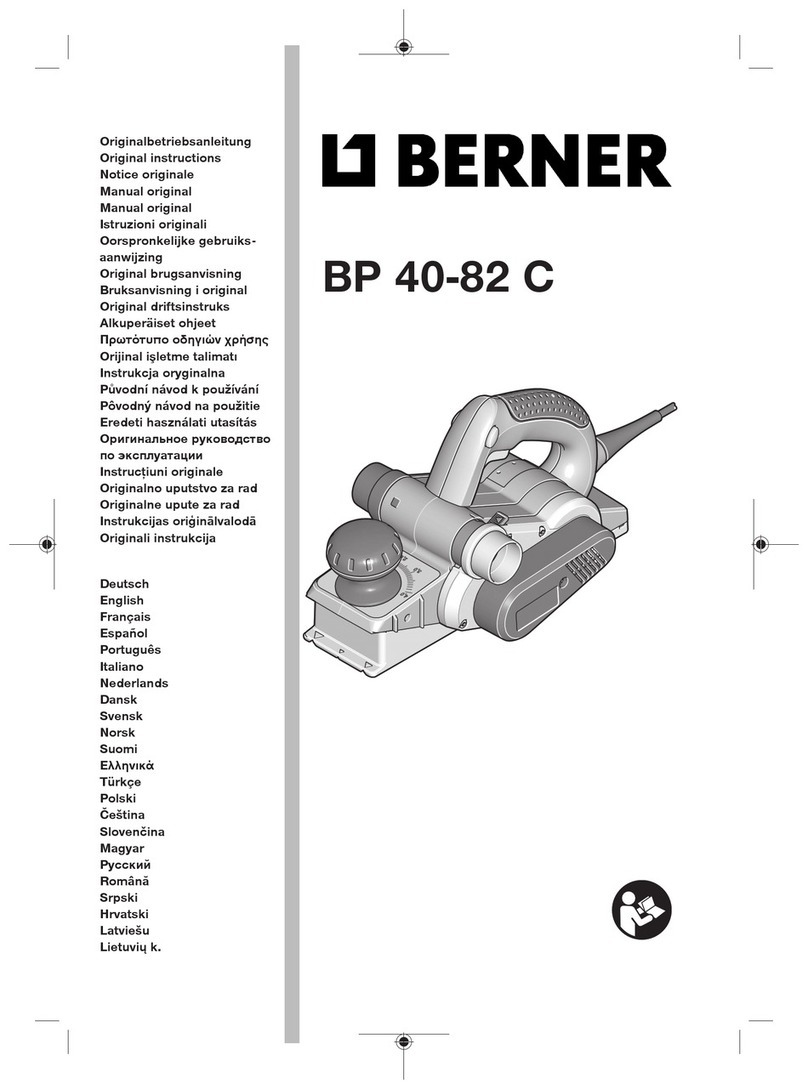3
Never stand on the machine.20. Injury could occur if the
tool tips, or if you accidentally contact the cutting tool.
Never leave the machine running unattended.21. Turn
the power off. Don’t leave the machine until it comes to a
complete stop. A child or visitor could be injured.
Turn the machine "OFF", and disconnect the machine22.
from the power source before installing or removing
accessories, changing cutters, adjusting or changing
set-ups. When making repairs, be sure to lock the start
switch in the “OFF” position. An accidental start-up can
cause injury.
Make your workshop childproof with padlocks, master23.
switches, or by removing starter keys. The accidental
start-up of a machine by a child or visitor could cause
injury.
Stay alert, watch what you are doing, and use common24.
sense. Do not use the machine when you are tired or
under the influence of drugs, alcohol, or medication. A
moment of inattention while operating power tools may
result in injury.
25. Use of this tool can generate and
disperse dust or other airborne particles, including
wood dust, crystalline silica dust and asbestos dust.
Direct particles away from face and body. Always operate
tool in well ventilated area and provide for proper dust
removal. Use dust collection system wherever possible.
Exposure to the dust may cause serious and permanent
respiratory or other injury, including silicosis (a serious
lung disease), cancer, and death. Avoid breathing the
dust, and avoid prolonged contact with dust. Allowing
dust to get into your mouth or eyes, or lay on your skin
may promote absorption of harmful material. Always
use properly fitting NIOSH/OSHA approved respiratory
protection appropriate for the dust exposure, and wash
exposed areas with soap and water.
1. Do not operate this machine until it is completely
assembled and installed according to the instructions. A
machine incorrectly assembled can cause serious injury.
2. Obtain advice from your supervisor, instructor, or another
qualified person if you are not thoroughly familiar with the
operation of this machine. Knowledge is safety.
3. Follow all wiring codes and recommended electrical
connections to prevent shock or electrocution.
4. Keep knives sharp and free from rust and pitch. Dull or
rusted knives work harder and can cause kickback.
5. Never turn the machine "ON" before clearing the table of
all objects (tools, scraps of wood, etc.). Flying debris can
cause serious injury.
6. Never turn the machine "ON" with the work- piece contacting
the cutterhead. Kickback can occur.
7. Secure the machine to a supporting surface to prevent the
machine from sliding, walking or tipping over.
8. Properly secure the knives in the cutterhead before turning
the power "ON". Loose blades may be thrown out at high
speeds causing serious injury.
9. Lock the speed setting securely before feeding the
workpiece through the machine. Changing speeds while
planing can cause kick-back.
10. Avoid awkward operations and hand positions. A sudden
slip could cause a hand to move into the knives.
11. Keep arms, hands, and fingers away from the cutterhead,
the chip exhaust opening, and the feed rollers to prevent
severe cuts.
12. Never reach into the cutterhead area while the machine is
running. Your hands can be drawn into the knives.
13. Do not stand in line with the workpiece. Kickback can
cause injury.
Failure to follow these rules may result in
serious personal injury.
14. Allow the cutterhead to reach full speed before feeding
a workpiece. Changing speeds while planing can cause
kickback.
15. When planing bowed stock, place the concave (cup down)
side of the stock on the table and cut with the grain to
prevent kickback.
16. Do not feed a workpiece that is warped, contains knots,
or is embedded with foreign objects (nails, staples, etc.).
Kickback can occur.
17. Do not feed a short, thin, or narrow workpiece into the
machine. Your hands can be drawn into the knives and/
or the workpiece can be thrown at high speeds. See the
Operation section of this instruction manual for details.
18. Do not feed a workpiece into the outfeed end of the machine.
The workpiece will be thrown out of the opposite side at
high speeds.
19. Remove shavings only with the power "OFF" and the
cutterhead stopped to prevent serious injury.
20. Properly support long or wide work-pieces. Loss of control of
the workpiece can cause serious injury.
21. Never perform layout, assembly or set-up work on the table/
work area when the machine is running. Serious injury will
result.
22. Turn the machine "OFF", disconnect it from the power
source, and clean the table/work area before leaving the
machine. Lock the switch in the "OFF" position to prevent
un-authorized use. Someone else might accidentally start
the machine and cause injury to themselves or others.
23. Additional information regarding the safe and proper
operation of power tools (i.e. a safety video) is available
from the Power Tool Institute, 1300 Sumner Avenue,
Cleveland, OH 44115-2851 (www.powertoolinstitute.
com). Information is also available from the National Safety
Council, 1121 Spring Lake Drive, Itasca, IL 60143-3201.
Please refer to the American National Standards Institute
ANSI 01.1 Safety Requirements for Woodworking Machines
and the U.S. Department of Labor Regulations.
ADDITIONAL SPECIFIC
SAFETY RULES
